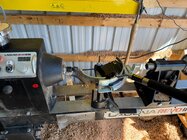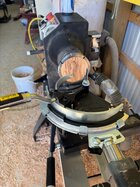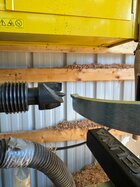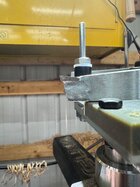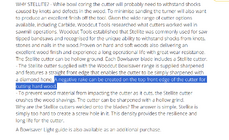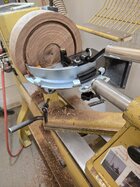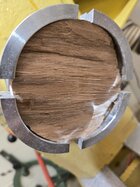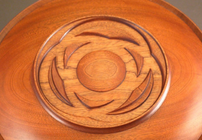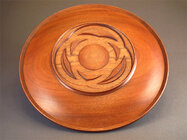Why should a tenon never be bottomed out in a chuck?
I'm no expert but this is what I've read and have been told and have had some experience with.
The flat part of at the top of the jaws should be in careful contact with a shoulder precisely cut in the wood, the shoulder at least just a little larger than the tenon. This shoulder is often cut between centers or while the other side of the piece is held in a screw or scroll chuck. There is no advantage in making this shoulder wider than the flat on the top of the jaws. This flat shoulder provides the most precision and the best grip.
If rough face turning green, (bowls) this shoulder of course will warp with drying, as will the tenon) and both should be trued up when dry.
If the tenon is too long, the flat tops of the flat upper part of the jaws can't touch and register with the shoulder and the grip may be compromised due to the design of the jaws. To dovetail or not to dovetail is subject to controversy. (I don't dovetail wood tenons.) Bottoming out the tenon on the inside bottom of the jaws can prevent the tops of the jaws from seating properly and cause imprecision. The tenon doesn't need to be long but it does need to be in good contact and the jaws tight enough. I usually make a tenon fairly short (1/4" or so for a bowl) unless I have a good reason to do otherwise. Never had a piece come out of the jaws.
This is from old Teknatool manual and shows two things: one, the problem with indiscriminate dovetailing, and the other, the proper gap between the bottom of the tenon and the bottom inside of the jaws. Notice Nova 50mm jaws have a tiny inside "lip" dovetail intended to bite into the wood. Some people call this a beak. The problem with large dovetails is you lose integrity and strength if the dovetail is angled just a tiny bit too much on a guess.
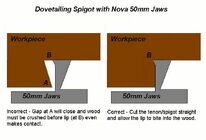
Even a short tenon is very strong UNLESS the wood itself is compromised (weak, punky, cracked in an unfortunate manner.)
This is the instruction in the manuals that came with my chucks and jaws.
Similarly, when expanding into a recess it's best to turn a precisely flat or nearly flat ring at the outside of the recess for contact with the flats of the jaws. The recess should not be so deep that the bottom of the piece contacts the bottom outsides of the jaws. As mentioned elsewhere, not much of a recess is needed. Unless I have a good reason to do otherwise, I usually cut a recess 1/8" or less which holds fine in GOOD wood. (if the wood is weak or has unfortunate cracks, do something else (such as use a glue block) And like tenons, to dovetail or not depends.
Again, I've never had a piece come out of a recess. (Of course, no catches allowed. If someone is prone to big catches they might consider getting mentoring on tool use and control.)
I posted this picture before - the recess in the base of this approx 19" offset-turned Sapele platter is just the three short curves in a circle inside the three triangular-like sections just outside of the center shallow domed circle. The recess depth is maybe 1/8" IIRC. This was enough to turn the entire top and rim of the platter.
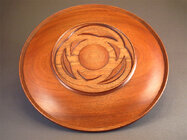
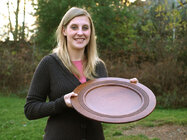
I personally use recesses more than tenons, except on end grain work where recesses often don't make sense.
Others may work other ways but this is my story and I'm sticking with it.

JKJ

